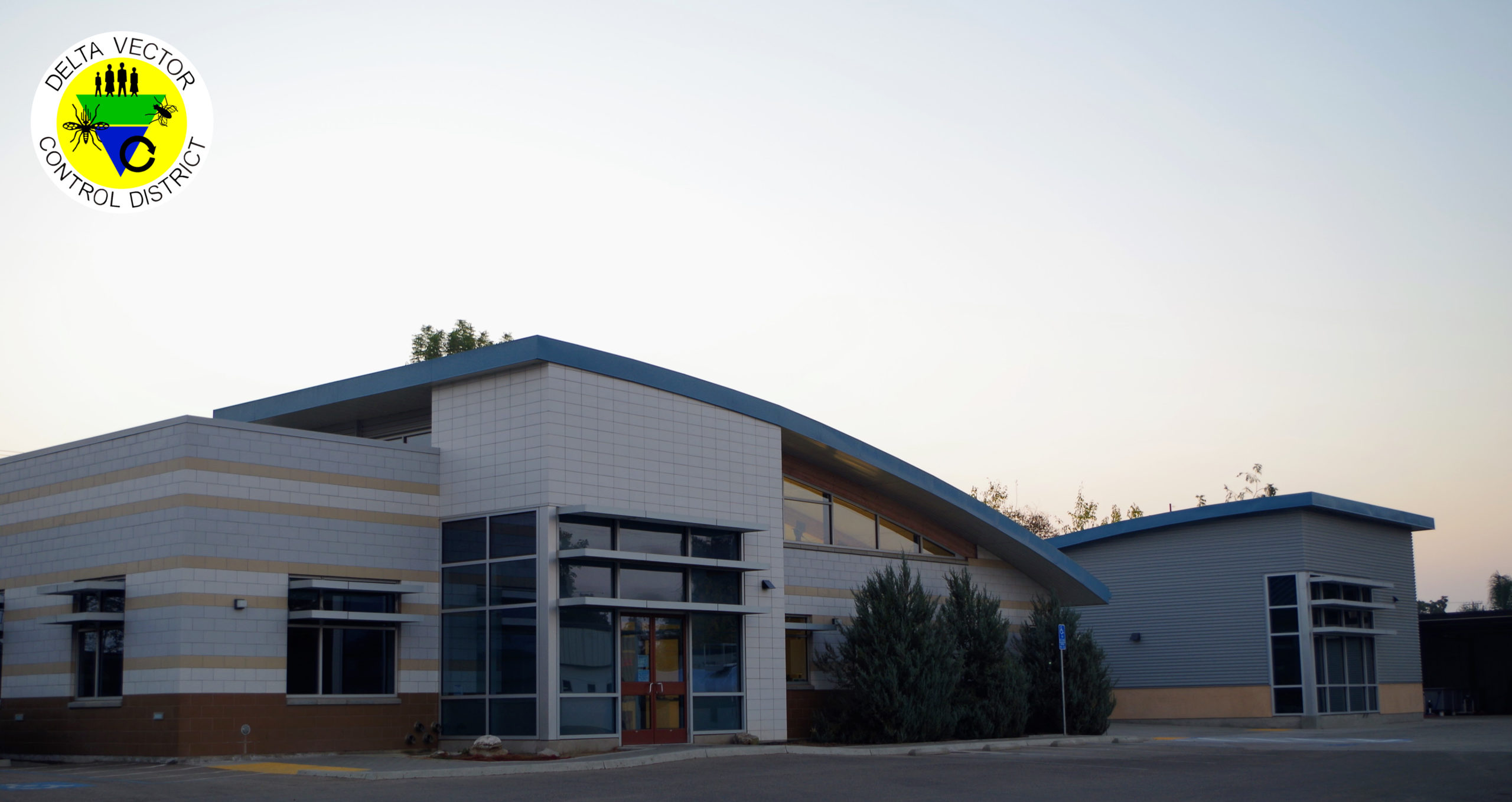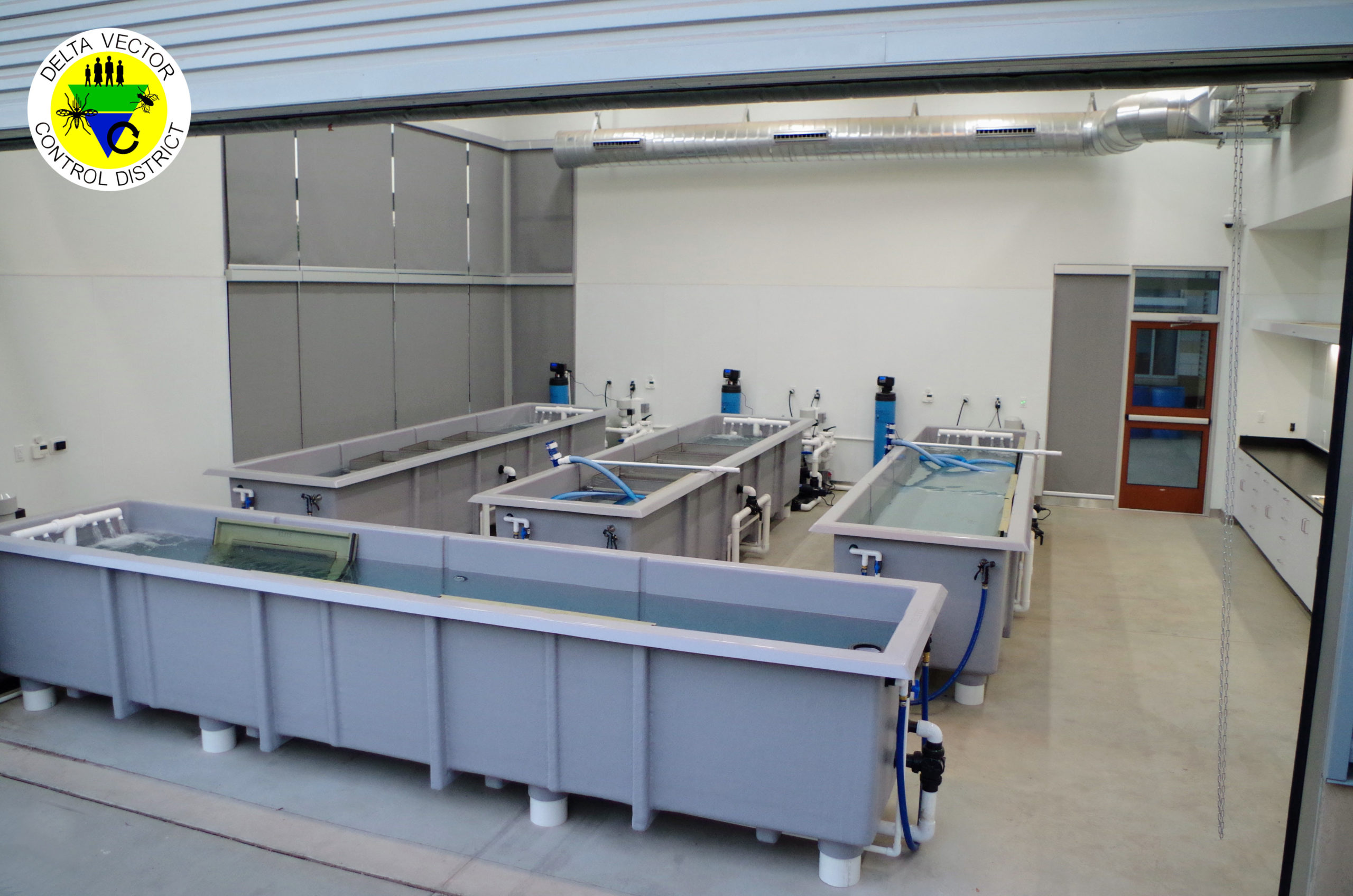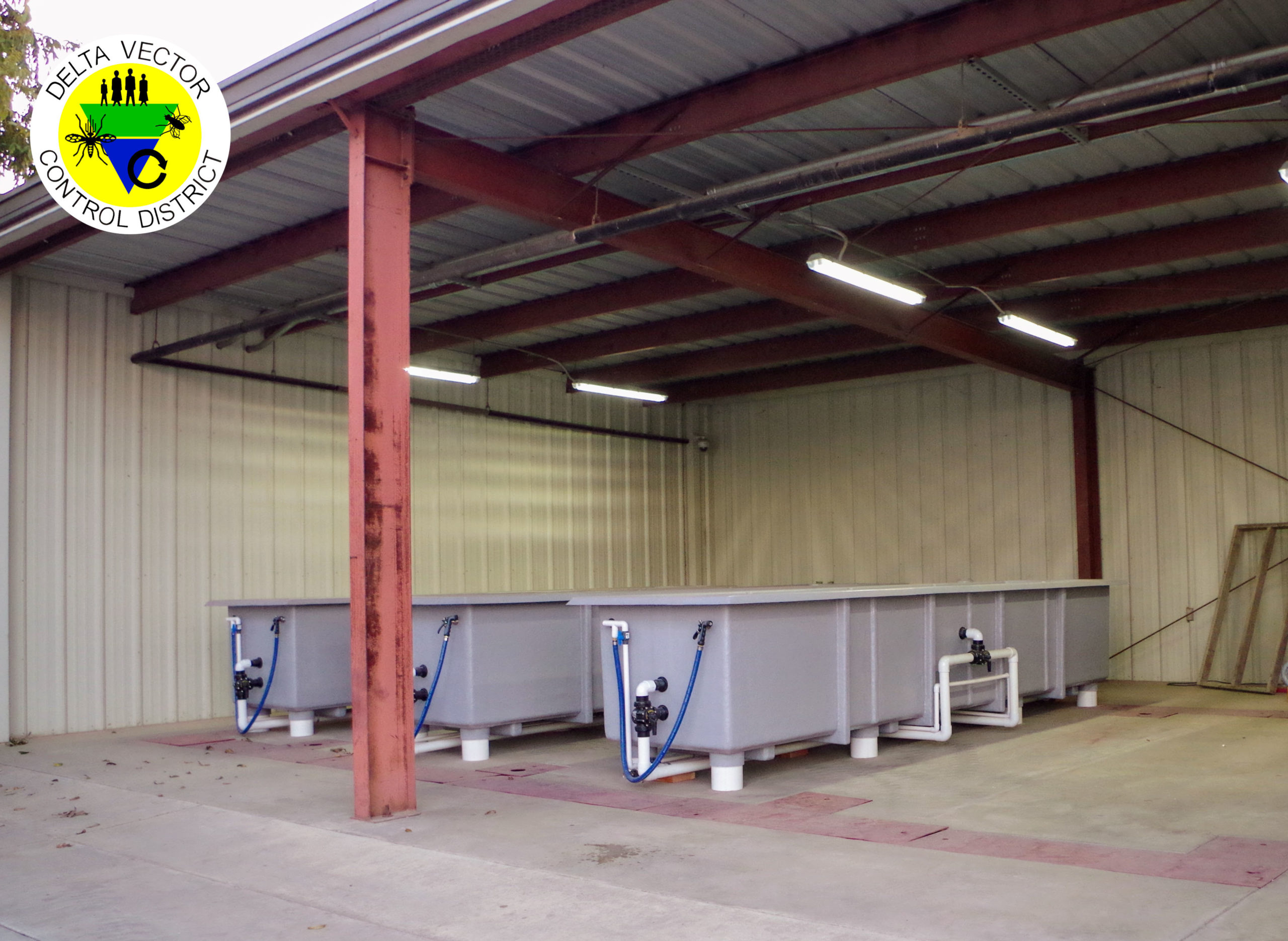


Delta Vector Control District Laboratory and Mosquitofish Facility
Delta Vector Control District (District) is proud to announce the opening of its most innovative facility to date, the Alburn Fish Hatchery. The hatchery is named after the District’s previous General Manager Michael Alburn and marks the end of a three-year building project. The project included the renovation of the District’s existing 699 square foot, semi-covered, outdoor mosquitofish facility and resulted in a new 925 square foot indoor mosquitofish facility with space for two new offices.

The new indoor Alburn Fish Hatchery
“In 2018, we realized it was becoming more difficult to stock our outdoor holding tanks by April and May, when we received most of our District service requests for mosquitofish (Gambusia affinis),” said Mark Nakata, District biologist.
The decline in mosquitofish stock was attributed to a number of factors including the challenges of overwintering fish outdoors, fishing in nearby outdoor ponds and reservoirs, and an increasing number of parasites and bacterial infections in wild harvested mosquitofish. The District decided to solve these ongoing issues by raising mosquitofish in a closed aquatic system similar to what many other mosquito and vector control districts use.
The District teamed up with Gambusia Solutions, which designs and manufactures filtration and tank systems for vector control districts, and purchased seven tanks and five filtration systems to meet the District’s needs. Each of the 3,000-liter tanks consists of a fiberglass body with reinforced steel that is covered in a UV resistant gel coat. Each filtration system consists of a bead filter, an 80W ultraviolet light, and ¼ HP Performance Pro pump.

The semi-covered outdoor mosquitofish holding facility
With the new facility and equipment, the District is able to have three tanks connected to one filtration system outdoors during mosquito season to serve as holding tanks for mosquitofish that are ready to be distributed to the field or residents when requested. Inside the new mosquitofish facility, there are four tanks, each running on their own filtration system to prevent cross contamination. Each tank also has an added 5.5kW titanium electric heater and a chlorine carbon water filter to remove any harmful impurities from the District’s water source. The birthing and grow out tanks are also housed indoors.
In addition to the tanks and filters, the new indoor mosquitofish facility features other notable equipment including mosquitofish feeders, lighting, and dehumidifiers.
- The feeders are 3L Pentair AES vibratory feeders mounted on a custom extruded T-slot aluminum frame and are powered by a custom controller built from an open-sourced sprinkler controller and wireless RF transmitters.
- There are 15 Peerless BRM9L lighting fixtures mounted on the ceiling. These lights have tunable white LEDs to simulate warm white for sunrise/sunset and cooler whites for daylight. Each fixture is rated at 90+ CRI and can put out about 3,000 lumens.
- Humidity in the facility is being controlled by three Quest 506 dehumidifiers mounted on the ceiling. Additionally, there is high humidity mildew resistant paint on the interior walls, and water-resistant spray foam insulation. Each of the dehumidifiers are rated to remove about 230 liters of water per day, allowing the facility to maintain 35% humidity which is low enough to prevent the walls and windows from accumulating condensation.

District Biologist Mark Nakata vacuums one of the new 3,000-liter tanks
While these are impressive changes for the District’s mosquitofish program, there are plans for even more exciting program improvements in the future. There is a plan to grow beneficial bacteria for the filtration systems over the next couple of years, followed by future plans to modify equipment in two stages. The first stage will involve calibrating the fish feeder system, tank modifications to target dead zones, and skimmer modifications to prevent mosquitofish from getting trapped. The second stage involves technological equipment modifications, which will include building custom Arduino-based sensors with a variety of probes to measure temperature, pH, light, salinity, conductivity, and oxygen to maintain adequate water quality in the tanks. Once all of the modifications are complete, the District will be able to conduct biological experiments to test mosquitofish stocking densities, diet, water parameters, and environmental factors to determine how each aspect affects mosquitofish development.
Delta Vector Control District strives to protect public health by using cutting edge technology, advanced control measures, best practices and an integrated vector management program. The Alburn Fish Hatchery marks an important milestone as the District continues to work to protect the residents of northern Tulare County from mosquito bites and mosquito-borne diseases.
For questions, comments, and additional information on Delta Vector Control District’s new state-of-the-art mosquitofish facility, please reach out to District biologist Mark Nakata at mnakata@deltavcd.com.
Interested in being showcased in the Agency Spotlight? Click here to download the application!
Past Agency Spotlights can be found here.
